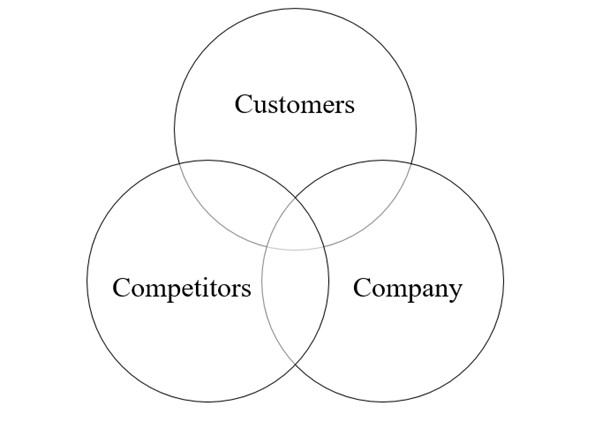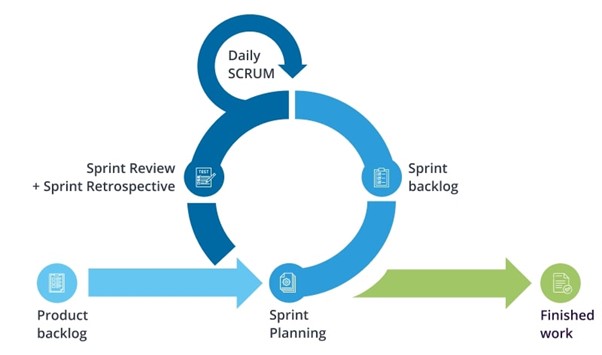In modern times, managing products has become a necessary trait behind the success of every organization. The process involves managing the entire lifecycle of a product from ideation to retirement. It also entails identifying customer needs, developing and launching new products, and ensuring they meet customer expectations while maximizing profitability. With the ever-evolving market and the increasing competition, companies are constantly seeking ways to improve their product development processes, maximize the value of their products and improve the workflow.
It is no doubt that product managers have to keep up with the latest trends in product management to cope with their goals and objectives. Numerous product management trends are growing along with the introduction of new products. In this article, the top 5 product management trends for 2023 will be covered that companies and product managers can benefit from in achieving their goals and objectives, so let us not wait anymore and jump into the world of modern product management trends.
Table of Contents: hide
What is Product Management and How Is It Evolving In 2023
Product management is a business function that involves managing a company’s product portfolio to ensure that the products meet the target market’s needs and contribute to the organization’s overall goals. In a product management department, product managers are responsible for ensuring that the product meets customer requirements, is competitive in the marketplace, and generates revenue for the company. They must balance the needs of the customer, the company, and the market to make data-driven decisions throughout the product lifecycle. The three C’s of product management are:
- Customers: One of the essential aspects of product management is the first C, customers. It requires comprehending the desires and choices of the intended market and gathering their input during the product development phase. By grasping the customer’s viewpoint, organizations can create products that cater to their needs, enhancing customer satisfaction and more significant revenue.
- Competition: The competition-related aspect of product management necessitates identifying the market’s dominant products and their unique selling points. Companies can develop appealing products that boost their market share and profitability by comprehending the competitive environment and evaluating the market they wish to target.
- Company: The company is the third C of product management, and it is about guaranteeing that the product is congruent with the broader goals and tactics of the company. By assuring that the product fits well within the larger organizational strategy, businesses can optimize the influence of the product and attain their commercial goals.

3 Cs Of Product Management
In today’s advanced world, IT firms and software houses must have effective product management to succeed. For example, the smartphone giant and the epicenter of innovation, Apple, and its product management has been key factor in its success. They thoroughly focused on understanding their customer’s needs, designing products with sleek and intuitive interfaces, and continuously improving their products has allowed them to stand out in the competitive tech industry. Effective product management has enabled Apple to consistently produce innovative products that appeal to its target market, resulting in high customer satisfaction and increased profitability.
Product management trends are always changing to keep up with technological changes, users’ wants, and market competition. As we move into 2023, it will be abundantly clear that product management will be more data and customer-centric in data analytics, cloud computing, artificial intelligence, and machine learning. It enables businesses to understand their target markets better, create products more quickly, and make more informed decisions.
Along with these technological developments, other factors that will impart changes in product management trends in 2023 include the growth of e-commerce, the importance of sustainability, and social responsibility. Companies are expected to create products that cater to a diverse and socially conscious customer base, be more transparent about their supply chains and environmental impact, and adhere to government regulations. By adopting these trends, businesses can beat the competition, increase profits, and positively affect society and the environment.

What Is Product Management And How It Is Evolving In 2023
Top 5 Emerging Trends in Product Management for 2023
Looking for emerging trends in product management? You are at the right place, as this section highlights the top 5 rising trends to help you manage your product seamlessly, so let us dive into it without any further delay:
Trend The growing importance of AI
Artificial intelligence (AI) is currently used in many industries, including product management, and has gained popularity in recent years. It has the potential to completely change how products are created, promoted, and sold, enabling businesses to stay ahead of the competition and satisfy customers’ changing needs. Data analysis, customer segmentation, and personalized recommendations are just a few ways product managers use AI.
The AI-based model today can analyze data, retrieve patterns and trends, and provide in-depth insights necessary to make a data-driven decision. Besides this, product managers can more effectively understand their customers’ needs and preferences with AI’s aid. They can customize their products and marketing messages accordingly, leading to higher customer satisfaction and increased sales. We can anticipate the development of even more sophisticated and advanced tools and techniques as the use of AI in product management expands, which will result in the introduction of fresh and cutting-edge products to the market.
One example of how immensely AI is being used in product management is by looking at big tech and e-commerce giants like Amazon. They use AI-based algorithms to analyze customer data and predict their purchasing behavior. This allows Amazon to make product recommendations and target customers with personalized marketing messages. AI is also being used to improve the product search experience on Amazon by using natural language processing (NLP) to understand customer queries and return more relevant search results.
In addition to Amazon, many other companies leverage AI in product management. For instance, the famous shoe and clothing brand Nike uses AI to personalize product recommendations and create customized products for customers. Using various deep network based AI-models, it analyzes the customer’s data and predicts their likings, offering products tailored to each customer. With the continued evolution of AI technology, it is quite explicit that product management trends in the upcoming years will increasingly be based on AI.

Trend The Growing Importance of Ai
Trend Working Smarter, not Harder
Instead of just working harder or longer hours, working smarter means employing efficient and effective strategies to achieve the desired set of outcomes. Working wisely in the context of product management is defined as using tools, methods, and approaches that positively impact productivity and enhance the product development process. This method requires extracting the most important tasks, setting priorities, and concentrating on high-impact, high-value activities.
Working hard can occasionally lead to transition delays from one phase to another, such as in product launching and sales, especially if the epicenter of focus is the tasks that do not directly contribute to the product’s success. For example, spending too much time on minor details or tasks that can be automated or delegated can waste valuable time and resources. On the other hand, working smartly can help product managers streamline their workflows, reduce unnecessary tasks, and focus on what matters. This approach can lead to faster product launch times and increased sales.
For instance, Google’s 20% time policy enables staff members to dedicate 20% of their work time each week to side or personal projects that may inspire new product concepts, eventually leading to the creation of popular products like Google Maps, Gmail, etc. This shows that even the tech giants are following the motto of working smarter, not harder, and have been able to innovate in the tech sector and stay one step ahead of the competition by working more intelligently and encouraging creative thinking.

Trend Work Smarter Not Harder
Trend Hybrid Management
Hybrid management is a novel approach to management that concatenates traditional and agile management methodologies. This approach aims to provide organizations with the ability to be responsive to fluctuating market dynamics and evolving customer requirements while maintaining a strong focus on achieving desired objectives, allowing greater flexibility in adapting to dynamic market environments.
In contrast to traditional management, hybrid management prioritizes collaboration among peers, establishing an environment that enhances the dispersal of knowledge and ideas for productivity. It is quite simple to understand that the more clear the communication will be among collogues, the more effective will be the decision-making processes. Besides this, it also encourages teams to work more adaptable and iterative, allowing organizations to react to changing market conditions more quickly.
Regarding product management, Adobe Systems Inc. utilizes a hybrid strategy that concatenates agile and waterfall methodologies. In addition to using a structured approach for project management, budgeting, and resource allocation, they also use agile practices for design and development, making them capable of meeting the changing customer demands and market conditions while still producing high-quality products.

Trend Hybrid Management
Trend Environmental Awareness
In product management, being environmentally aware means acknowledging our duty to conserve and safeguard the environment. It requires understanding how human actions can affect the environment and striving to reduce harmful consequences by adopting sustainable approaches. By integrating environmental awareness into product management, companies can constructively influence the environment and simultaneously cater to the customer’s requirements. It requires developing eco-friendly, energy-efficient, recyclable products manufactured using sustainable materials.
Consumer demand and a commitment to sustainability are expected to drive the trend of environmentally friendly products in the product management sector as we get closer to 2023. As consumers become more aware of their environmental impact and demand eco-friendly products, the bonding between environmental awareness and product management is becoming more crucial.
Nestle is an example of a company that switched its product management strategies to incorporate environmental awareness. They announced they would replace all their plastic straws with paper straws across their product range. This initiative was part of the company’s efforts to reduce plastic waste and promote sustainability. This example demonstrates how environmental awareness can be incorporated into product management, resulting in positive outcomes for both the environment and the company’s bottom line.

Trend Environmental Awareness
Trend Collaboration among Product Managers
Collaboration is crucial in product management because it allows managers to exchange knowledge and ideas, enhance communication, and find common grounds to resolve conflicts, which follows its definition as the process of working with others to achieve the same objective. This way, they can create products that meet the mark. Moreover, it promotes a sense of shared ownership and responsibility for the product’s success, ultimately resulting in customer satisfaction.
Collaboration with other product managers can also help them develop their abilities and knowledge. From exposure to senior collogues, product managers can learn new techniques/methods and develop fresh perspectives on product development. Besides this, when product managers collaborate, it helps them avoid getting stuck in a loop of repeating efforts. It ensures the final products align with the overall product roadmap, enhancing the final product’s marketability and durability.
Consider a scenario in which two product managers from a software company, one working on a web application and the other on a mobile app, combined their efforts to integrate their products. By cooperating, they could find and resolve potential conflicts and overlaps in their features and functionality. Insights on user behavior and customer feedback were also shared, which improved the user experience on both platforms. The collaboration of the web and mobile apps aligned more with the overall product roadmap.

Trend Collaboration Among Product Managers
Final Thought
Product management is evolving rapidly, with new trends emerging every year. To cope with the changes, product managers must stay updated and adapt their strategies to leverage competitively. This article explored five prevailing product management trends in 2023, including hybrid management, environment consciousness, collaboration, working smartly, and incorporating AI.
We hope that this article will inspire product managers to embrace these trends in their practices and share the knowledge with friends and family; also, we appreciate your feedback comment below what are your thoughts about it


